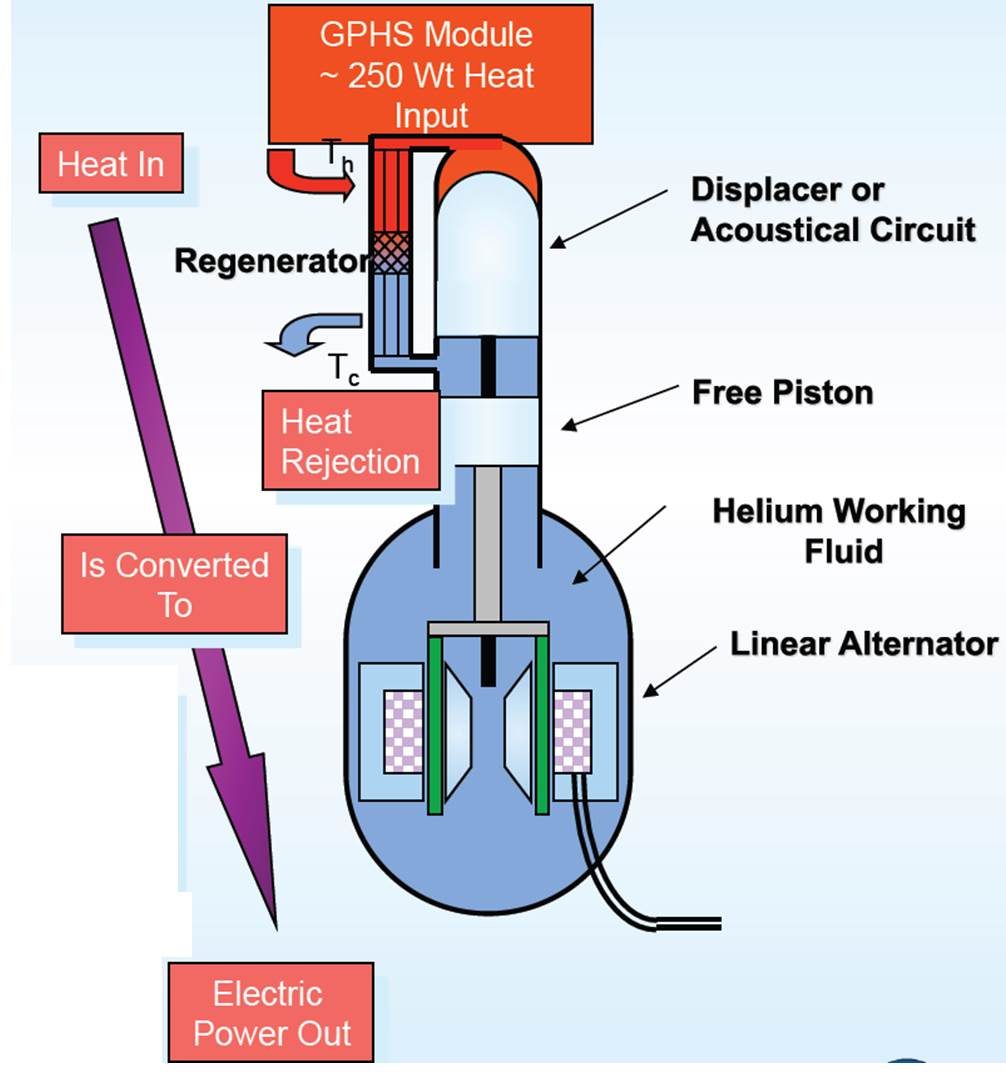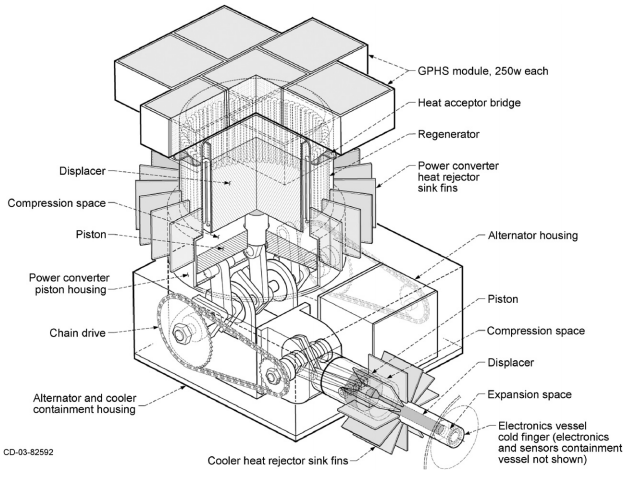Main Power
Analysis of Alternatives
Solar Power
Solar Power is a common technology used when designing a power system
for an extraterrestrial environment. There are two ways you can harvest energy
from the sun and utilize it on the surface of Venus. The first way is by
populating the lander with solar panels. However, because of the dense atmosphere
on Venus, little sunlight reaches the surface. The light level is roughly equivalent
to the illumination during a rainy day on Earth [1].Therefore, the amount of area
needed to produce the amount of power required makes this design unrealistic.
An alternative to solar panels on the lander would be microwave beamed power from a
station in the Venus atmosphere to the lander on the surface [1]. This approach
increases cost by adding another spacecraft and increases the risk of failure by
adding another element to the system.
Wind Power
Researchers have considered using the winds of Venus to generate power [2].
While the wind speed at the surface of Venus is relatively low compared to Earth,
it is still feasible to turn a turbine because there is still enough force generated
from the wind accelerating the dense atmosphere. It has been calculated that a
turbine with a 5 m2 area at the average wind speed of 0.6 m/s will generate 5.2
Watts [2]. While this is an elegant solution for a lander communicating with a
relay orbiting Venus, our proposed design is using direct communication with Earth.
Therefore, the lander requires more power then this solution can provide.
Our Selection: Radioisotope Thermoacoustic Generator
There are two types of nuclear isotope power systems, thermoelectric power
converters and Stirling power converters. Geoffrey Landis and Kenneth Mellott
propose two systems in their paper titled Venus Surface Power and Cooling Systems.
Their thermoelectric power converter produced approximately 30 Watts. However,
there are no moving parts, making this solution more reliable. The author’s
Stirling power converts 478 Watts of mechanical power into 100 Watts of electrical
power using high temperature electric motors [1].

Principles of Operation of Thermoacoustic Stirling Generator [3]
This converter also incorporates
a Stirling Cooler which can be used to provide a cooler environment for the lander’s
electronics. However, our design’s electronics will not need any cooling and can
survive at the ambient temperature of Venus. This solution weighs a total of 21.6 kg
and is illustrated in Figure 3 [1].

Internal View of Thermoacoustic Stirling Generator
[1] G. A. Landis and K. C. Mellott, "Venus Surface Power and Cooling Systems," Acta Astronautica, vol. 61, pp. 995-1001, 2007.
[2] G. Benigno, K. Hoza, S. Motiwala, G. A. Landis, and A. J. Colozza, "A Wind-powered Rover for
a Low-Cost Venus Mission," presented at the 51st AIAA Aerospace Sciences Meeting, Grapevine TX, 2013.
[3] G. W. Hunter, "Long-Lived Venus Lander Technologies: A Brief Discussion Of
Technologies Relevant to Long-lived Landers For Venus Exploration," presented at
the Seventh Meeting of the Venus Exploration and Analysis Group (VEXAG), NASA Glenn Research Center, Cleveland, OH, 2009.